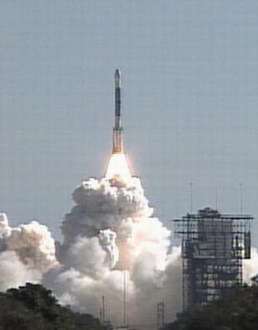Deep Impact Launched; Comet is Waiting

NASA's Deep Impact spacecraft began its 431 million kilometer (268 million mile) journey to comet Tempel 1 today at 1:47:08 p.m. EST.
Data received from the spacecraft indicate it has deployed and locked its solar panels, is receiving power and achieved proper orientation in space. Data also indicate the spacecraft has placed itself in a safe mode and is awaiting further commands from Earth.
Deep Impact mission is designed for a six-month, one-way, 431 million kilometer (268 million mile) voyage. Deep Impact will deploy a probe that essentially will be "run over" by the nucleus of comet Tempel 1 at approximately 37,000 kph (23,000 mph).
A 1-by-1-meter (39-by-39 inches) copper-fortified probe is designed to obliterate itself, as it excavates a crater possibly large enough to swallow the Roman Coliseum. Before, during and after the demise of this 372-kilogram (820-pound) impactor, a nearby spacecraft will be watching the 6-kilometer (3.7-mile) wide comet nucleus, collecting pictures and data of the event.
Deep Impact is comprised of two parts, a "fly-by" spacecraft and a smaller "impactor." The impactor will be released into the comet's path for a planned collision on July 4. The crater produced by the impactor is expected to be up to the size of a football stadium and two to 14 stories deep. Ice and dust debris will be ejected from the crater, revealing the material beneath.
The fly-by spacecraft will observe the effects of the collision. NASA's Hubble, Spitzer and Chandra space telescopes, and other telescopes on Earth, will also observe the collision.
Comets are time capsules that hold clues about the formation and evolution of the Solar System. They are composed of ice, gas and dust, primitive debris from the Solar System's distant and coldest regions that formed 4.5 billion years ago.
The management of the Deep Impact launch was the responsibility of NASA's Kennedy Space Center, Fla. Deep Impact was launched from Pad 17-B at Cape Canaveral Air Force Station, Fla. Delta II launch service was provided by Boeing Expendable Launch Systems, Huntington Beach, Calif. The spacecraft was built for NASA by Ball Aerospace and Technologies Corporation, Boulder, Colo. Deep Impact project management is by JPL.
















